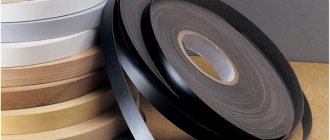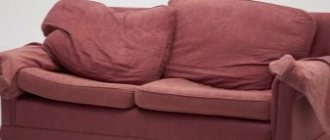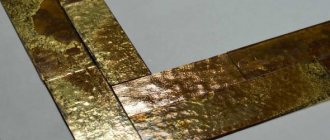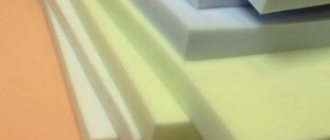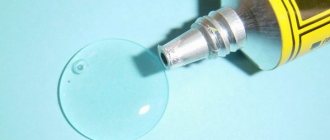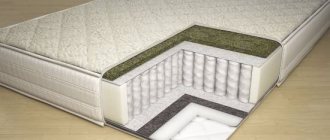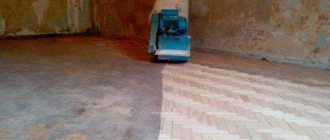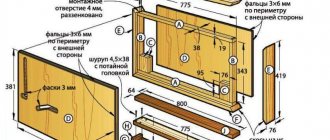Foam rubber is considered one of the most common materials used in a wide variety of fields. The history goes back more than 50 years since the material became firmly established in the everyday life of every family. Thus, many do not resort to hiring workers for repairs and try to carry out the repair work themselves. For such purposes, the article examines in detail the pressing question of which adhesive for foam rubber will be optimal.
- Glue for gluing foam rubber: features of choice
- Required characteristics of foam adhesive
- Selection of adhesive mixture
- Alternative adhesives for foam rubber
- How to glue foam products: step-by-step instructions
- Finally
The foam material is 100 percent polyurethane filled with air cells. It has increased breathability, is not afraid of mold and can cope with temperatures both quite low and quite high. It is for these reasons that the material is so popular in everyday life and in production.
Before starting work, it is necessary to determine how to glue the polyurethane foam together. So, let's look at the main selection criteria and types of glue that are suitable for working with foam rubber. It is important to understand the advantages and disadvantages of a wide range of adhesives in order to make the right choice, as well as learn the basic rules for gluing foam surfaces.
Features of choice and types of glue for foam rubber
Selecting the right adhesive is not an easy task, and its solution directly affects the quality of gluing foam rubber to other materials. You should immediately reject the option of gluing with adhesives containing dangerous toxic substances. These substances include toluene and trichloroethane. The use of adhesives containing these substances can have negative health consequences, and the effectiveness of gluing leaves much to be desired.
Please note that you should not use adhesives that contain substances that corrode foam rubber, as well as liquid compounds that can clog the porous structure of the material.
It is advisable to glue foam rubber with special adhesives. Today there are a large number of different adhesives on the market.
Foam glue is divided into two types:
- professional
- for mass use.
Professional adhesive compositions are intended for furniture manufacturers and have a high cost. The more affordable ones are, accordingly, affordable and it won’t be difficult to purchase them.
One way or another, when choosing a glue you need to keep in mind some features:
- Elasticity. An adhesive whose viscosity is 100 s or more produces an elastic and aesthetically attractive seam at the adhesion site.
- Dry residue . The rate of hardening of the glue depends on the ratio of dry mass to the mass of the liquid substance: more dry residue - higher speed of glue hardening.
- Clutch speed. The composition should set within two minutes after application.
- Composition color. To ensure that the glue seam does not stand out too much, it is necessary to select glue with shades close to the shades of the things being glued.
- Packaging form. Glue in spray cans is the most convenient form of packaging. It is easy to apply even to the most inaccessible places, does not clog the pores of the foam and sets very quickly.
When choosing glue for foam rubber, the best choice would be adhesives based on butadiene styrene, neoprene, polyurethane - they will allow you to glue foam rubber to almost any surface with the least difficulty.
Release form and brands recommended by professionals
When choosing any brand of fixative, look at the consumption rate and expiration date.
Rapid 100 - it contains no solvent, is non-flammable, hardening time is a few seconds, forms an even, strong seam.
Glue 88 for foam rubber is universal - based on synthetic rubber, the structure resembles shoe glue, suitable for application to large areas, drying time is about a minute, without color. A thin layer is enough for quick and strong fixation of materials. It grips any surface equally quickly with foam rubber. It is necessary to remove any dirt before application. Leaves an even, soft seam.
Saba - produced in aerosol cans and cans. Suitable for different surfaces in size and composition, frost-resistant, long drying time. It has no harmful impurities, a wide temperature range, and provides high-quality adhesion.
The moment for foam rubber is colorless and odorless, the stated drying time is 10–15 minutes, it glues surfaces well, but is expensive.
Liquid PVA takes a long time to dry; surfaces to be glued require additional fixation. The seam is soft.
Hot-melt adhesive – dries very quickly, sticks to any surface, but produces a hard, hard seam.
Double-sided tape doesn't hold.
Selection of adhesive composition
Most experts recommend choosing foam glue from well-known and time-tested manufacturers.
- Rapid glue
Rapid glue of various models has gained particular popularity. It contains no solvents, is not flammable, and when gluing it forms a strong and even seam. This glue sets quite quickly.
- glue BF-6
The next representative of popular adhesives is BF-6. It perfectly glues foam parts together. Significant advantages of this glue include safety and ease of application. It has certain features when gluing:
- the surfaces to be glued must be moistened;
- the glue must be applied in two layers, and the first must be thin and dry before applying the second layer;
- After the glue has dried, the finished item is ironed along the glue seam with an iron through a damp cloth.
- Foam glue 88
It became widespread in the 90s of the last century. It has a second “unofficial” name – “shoe”. The main adhesive composition is rubber. It can be classified as a ready-to-use adhesive, since it does not require mixing of individual components before use. In order to reliably glue the surfaces, applying a small layer of adhesive is enough.
The advantages of glue include:
- obtaining a seam that is resistant to low temperatures;
- work with a large number of types of surfaces.
- SABA glue
Among the representatives of adhesives in the form of spray cans, SABA glue can be distinguished. Application is done using a pistol. The main advantages of this glue:
- non-flammability;
- safety for humans;
- resistance to high temperatures;
- increased adhesion of glued materials.
The glue is great for use at home and in production.
- Foam rubber 2
Foam rubber 2 is also perfect for gluing foam surfaces together. This glue is actively used in furniture manufacturing enterprises. Using this glue, you can attach foam rubber to materials such as wood, metal surfaces, chipboard and fiberboard, cardboard, drywall, fabric, leather, rubber surfaces - the list goes on and on.
The surfaces to be bonded must be cleaned, degreased and dried - this will allow for better adhesion, ensuring the reliability and durability of the gluing.
- Olimpur
The last of the special adhesives considered will be the Olimpur composition. This is a water-based adhesive that requires spot application to the surfaces to be bonded. A distinctive feature of this composition is its excellent bonding ability with all kinds of building materials (plywood, drywall, plaster, fabric, etc.).
Use for fabric
Aerosol fabric adhesives allow you to bond cotton, felt, coconut fiber, textiles, jute and other materials. Thanks to its transparent composition, it is perfect for repairing clothes and effectively seals tears and punctures.
Used for edging carpets, attaching various details and appliqués to fabric.
Properties:
- does not cause deformation of the material,
- resistant to detergents,
- not afraid of high temperatures.
Thanks to the special formula, it does not seep through the fabric, does not pill, and is convenient for fixing patterns and materials, as well as for sewing in a zipper. Glue consumption is very economical. Before use, shake the can well and spray at a distance of 30 cm.
Multi spray is another great option.
Multi spray aerosol glue is produced in England. This unique composition adheres well to various materials - from veneer and metal to foam rubber and cardboard. Acts quickly and glues firmly. It is used for both permanent and temporary fastening of various materials. Suitable for drapery and finishing work.
To get an effective result:
- the surfaces to be bonded must be degreased,
- remove dust and dirt.
- It is better to work with safety glasses and also open the windows.
- The container should be shaken well and held at a distance of 20 cm.
- Apply the glue in an even layer and leave for 5-10 minutes.
For one surface, the exposure time is about 30 minutes, for two – about 2 hours.
You can use solvent to clean the nozzle on the cylinder.
Safety precautions when using spray adhesive:
- provide good ventilation,
- close the container during breaks,
- store separately from alkalis and oxidizing agents, away from heating devices,
- use personal protective equipment,
- Wash soiled clothes thoroughly.
For applying drawings, aerosol adhesive for stencils is useful, for finishing work - special compounds for working with plastic, paper, and plastic.
A large selection of brands and glues will allow you to choose the most optimal option for household and professional use.
Author of the article - Kristina Sekushina
Testing alternative adhesives
All the adhesive compositions discussed above are, of course, good. However, a logical question arises: is there a less worthy alternative to professional compositions? Of course it exists!
Let's consider and test the main alternative methods for gluing foam rubber products using commonly available products.
— Titan adhesive for polystyrene ceiling tiles. Average cost: 100-130 rubles for a 0.5 liter container.
The disadvantages of this glue include a hard-touch seam and a long hardening time (it took almost a day to dry completely!).
— Universal glue “Crystal Moment” Average cost – 130-140 rubles per 125 ml bottle.
The list of bonded surfaces also includes foam rubber. In practice, this glue turned out to be a “strong average”.
Its actual adhesive surface turned out to be slightly above average - the foam stuck to a hard surface mediocrely, and in some places it could be torn off without much effort. The glue pasted over the foam rubber and foam rubber quite well.
— PVA glue (universal) Average cost: 140 rubles per 250 g jar.
The method of gluing foam rubber with this composition turned out to be quite unexpected. In practice, several significant disadvantages have been identified: gluing foam rubber to an uneven surface requires fixing it to it with tape or another method of fixation, a long drying time - 1 day, the seam turned out to be quite rigid. Otherwise, the option is slightly below average; the ease of use of this method is far from ideal.
— Double-sided tape Average price – 50 rubles per roll of 10 m.
It was not possible to glue foam rubber to foam rubber or to a hard surface. Adhesive tape, as expected, showed weak adhesion to surfaces, so this method is of little use for serious tasks.
— Hot-melt adhesive The average cost is 50 rubles per stick.
The gluing method turned out to be quite good, but the seam turned out to be quite hard and tactile to the touch, which is not very good. If you need to glue large areas, this method will not work, since the glue quickly wears out and loses its properties.
Overall, it’s a good option for use at home.
— Silicone sealant Average cost – 100-260 rubles per 250 ml tube.
The last composition considered for gluing foam rubber will be ordinary silicone sealant. This method has only one significant drawback - long drying time (about a day). Otherwise, the seam turned out to be soft, and the adhesion to a homogeneous surface (foam rubber), as well as to a hard one, turned out to be at a fairly good level.
Final conclusions
Summing up the testing results, we can make a rating of adhesive compositions, depending on their effectiveness.
In order from worst to best, the list looks like this:
- Double sided tape. Poor grip on all types of surfaces and a well-deserved “first place from last”.
- PVA glue. Due to the inelastic adhesive seam and the drying time of the bonded surfaces, the low price-quality ratio, PVA earns an honorable penultimate place.
- Glue "Titan". Long bonding time, non-elastic adhesive seam and 4th place on the list. Not recommended for gluing foam to foam.
- Hot melt adhesive. Honorable third place. The properties of hot-melt adhesive are similar to Titanium, it sticks well to a hard surface, but it is not recommended to glue foam rubber with foam rubber.
- Silicone sealant. Silver goes to silicone sealant. A good method for gluing surfaces, gluing characteristics are slightly above average. The only significant disadvantage is the long drying time and the relative high cost of gluing.
- Universal glue “Crystal moment”. Among all alternative professional compositions, Crystal glue takes an honorable first place. Good gluing performance on any surface, soft seam, quick adhesion and hardening. The only fly in the ointment in this barrel of honey is that the cost of the glue is still quite high.
Renewing old furniture - leather reupholstery
If you want to update the interior of your home, then replacing old furniture with new decorative items is not at all necessary.
The quality of modern products, be it a soft corner, an armchair or a sofa, is far from ideal, while furniture of the “old school” was made mainly from natural wood.
Unfortunately, modern furniture is made from MDF, chipboard and other cheap analogues - natural wood has become an expensive pleasure.
That is why it is better to restore or repair upholstered furniture. In addition, you can do all the work yourself.
We select materials for reupholstering furniture and decide what glue to use to glue the foam rubber
In furniture production, special types of adhesives are used that have specific features.
Thanks to its special composition, this adhesive ensures reliable adhesion of materials with different surface characteristics and performance characteristics, and also guarantees the quality of the assembled structure.
Features of gluing products made of foam rubber.
So, the appropriate adhesive has been selected, you can begin gluing the surfaces. However, there is no need to rush! It's still just beginning.
To ensure good adhesion of surfaces, you must first clean them of dirt and dust. Then it should be treated with a degreaser (White spirit is fine) and dried thoroughly. It is advisable to carry out gluing at room temperature to prevent the composition from thickening - a thick composition will lead to increased glue consumption and a significant deterioration in the quality of the seam.
When gluing products made of foam rubber, it is necessary to apply the composition strictly in accordance with the attached instructions: application with a brush, roller or spraying from a can.
The most economical way to apply glue is with a gun, while a brush produces a noticeable waste per unit area.
As a rule, after applying the adhesive composition, you must wait a certain amount of time, usually specified in the instructions. The waiting time can range from one minute to two to three hours. Next, the parts are pressed against each other until a seam is formed.
How to glue foam rubber at home
It should be clearly understood that the selected raw material consists of only 10% foam, the rest is air.
Considering these characteristics, if the fixing mixture is not carefully applied, the consumption will seem very large; a significant part of the family budget will be spent on liquid. If a person follows the instructions and takes into account some tips, then the question of how to glue foam rubber will no longer look so complicated.
When organizing the process yourself, it is necessary to buy models of compositions that do not contain trichloroethane and toluene, and it is also easiest to work with more liquid solutions that can dry instantly.
The most popular and effective types of products and their purpose
The following two types of products are most in demand in shoe production:
- Nairite glue is used for: fastening soles and rubber heels, for tightening heels, fastening elastic toe caps, reinforcements, for tightening the finished upper part of the product.
- Polyurethane product - it is used to coat the workpieces and glue the soles.
- Rubber-vinyl chloride glue glues layers of insoles and holds rubber soles well.
- The polyvinyl chloride composition is used for textile and leather insoles, braiding, and sealing.
- The combined adhesive is good for the first coating of the edge of a workpiece, fastening rubber soles, and for stitching and adhesive fastening.
Advantages and disadvantages of different compositions
If you decide to purchase good glue and start repairing boots, shoes and shoes yourself, you need to learn about all the advantages and disadvantages of a particular type of glue, as well as get information about whether this composition is suitable for your type of product.
The polyurethane composition has good fastening strength due to the fact that it hardens strongly after application. It also swells significantly and increases in volume, thanks to this quality it can reliably bond porous surfaces. There are many such compounds; dismacol is one of the most popular when working with shoes. Dismacol is suitable for leather and rubber.
Rubber perchlorovinyl adhesive is made from artificial rubber and is most suitable for repairing summer shoes, as it does not provide resistance to moisture and frost.
PVC is made from polyvinyl chloride resin. Its main advantage is elasticity, so it is used to fasten textile layers, braids, and leather parts.
The combined mixture is made from rubber, resins and nairite. It's great when you need to attach a synthetic or leather upper to a sole. It is also used to seal seams and coat wounds.
The special composition “EVA” is one of the best for working with boots and boots; it is hypoallergenic, elastic, very light, does not absorb moisture, and becomes transparent when dry. The only point is that EVA is not suitable for working with PVC products.
When choosing glue, use our recommendations, read reviews of the products and instructions supplied with the products. If you are not sure which glue is best and which one you should choose, contact your point of sale consultant.
What's the alternative?
Each glue, about which there is a lot of information above, is good in the application process, but is there something similar? Is there something more affordable and non-professional available? Of course, it exists - you just need to decide at the planning stage why it is being purchased.
So, how to glue foam rubber together or with other surfaces? There are many resources, namely:
- Glue "Titan". Its price is low, it joins many materials well, but the main disadvantage is that the seam turns out hard, and it also takes a long time to dry completely.
- Is it possible to glue foam rubber with “Moment”? The answer to this question is yes. His performance is average. The seam is not too hard, but reliable bonding does not occur over the entire surface. But to glue foam rubber together, this is the most suitable means. So many do not choose professional substances, but stop there.
- Does PVA glue foam rubber? You won’t have to pay more than 150 rubles for this substance. This is quite convenient to do, but in practice there are some disadvantages - if the surface has curves, then you will need to fix it with something additional for a while. Complete drying requires at least 24 hours, resulting in a hard seam. It cannot be called ideally suited.
How to glue a sponge to metal?
The glue should not contain substances that corrode the surface, however, it should not be liquid - in this case, it will quickly be absorbed into the foam rubber and deform it. It is best to use adhesives based on polyurethane, neoprene or styrene butadiene. These include Moment, superglue, epoxy.
Interesting materials:
What is the difference between an acoustic and classical guitar? What is the difference between AirPods and wireless charging? What is the difference between dpi and ppi? What are the differences and advantages of RAR and ZIP formats? What is the difference between cocoa mass and cocoa powder? What is the difference between LED and QLED? What is the difference between an acoustic and electric guitar? What is the difference between AM3 and AM3+? What is the difference between atopic dermatitis and allergies? What is the difference between DDR DDR2 DDR3?
Buyer Guidelines
Many will say that it has become even more unclear than it was. A huge number of criteria, but what should the average person take? How can you glue foam rubber securely and without unnecessary worries? Pay attention to the composition. The best choice would be an adhesive based on butadiene styrene. There are a lot of them on the market today, and among other things, they are easy to use. Such compositions will allow you to glue foam rubber to almost any surface with the least difficulty. Usually this procedure is enough for the entire life of the product, that is, you can be sure that nothing will fall off. Next, we’ll look at brands that meet these requirements.
Assignment of material properties
This type of foam is nothing more than polyurethane glue, which is excellent for gluing polystyrene foam, as well as slabs for internal and external thermal insulation of surfaces and facades.
Among the properties of polyurethane adhesive foam, it should be noted a significant reduction in the time required for insulating and insulating facades. With its help, you can complete almost the entire volume of outdoor work in one working day. As a substance, this foam has a high degree of adhesion with most mineral materials, as well as with expanded polystyrene.
It has excellent thermal insulation properties and a high degree of water resistance. The properties of adhesive foam are so unique that they allow you to perform work even at low temperatures or at high humidity. Foam, unlike other similar building materials, does not contain freons, so it can be argued that this material is environmentally friendly and safe.
Designed mainly for fastening slabs made of expanded polystyrene for arranging the external facade during construction and insulating houses. Also useful for filling voids formed between these slabs. But, in addition to these properties, polyurethane foam can be used as a material for gluing wooden and plasterboard products to various surfaces and materials, for example, concrete and metal. Polyurethane foam adhesive is also used when installing aerated concrete structures, as well as during construction work with materials such as polystyrene foam and polyurethane or ceramic tiles, aerated concrete blocks, and so on.

